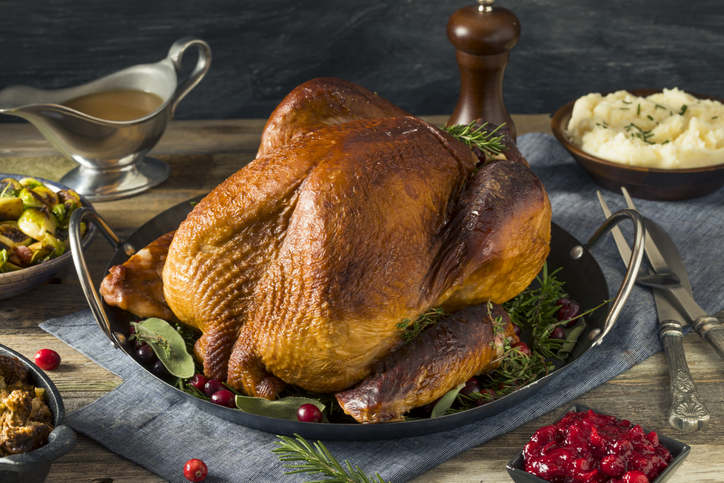Reading the news, it can be easy to get the impression that everything is going downhill and it may feel hard to find reasons to be thankful or optimistic. But as Thanksgiving approaches, know that some things are improving – to see the evidence for yourself, spend some more time exploring HumanProgress.org, which chronicles advances in areas of wellbeing as diverse as medical technology and gender equality.
One thing that has improved is the cost of Thanksgiving dinner itself, according to recently released numbers from the American Farm Bureau Federation (AFBF).
In fact, the inflation-adjusted cost of a Thanksgiving dinner has declined for three years in a row. Thanksgiving dinner is now the most affordable that it has been in more than a decade and is 26 percent lower than in 1986, when the AFBF began its annual survey on the matter.
The AFBF sent a total of 166 volunteer shoppers to check prices at grocery stores in 37 different U.S. states for this year’s survey. The volunteers were specifically told not to take advantage of any special promotional coupons or purchase deals – so a savvy shopper may be able to get a far better price on Thanksgiving dinner than the average cost that the AFBF reports. The AFBF survey, in other words, may overestimate the cost of Thanksgiving dinner. Nonetheless, the survey found a decline in price.
The traditional Thanksgiving foods or ingredients showing the largest decreases in real cost this year included milk, sweet potatoes, green peas, rolls, and—fortunately—turkey.
Compared to 1986, the inflation-adjusted cost of a turkey dinner today is more than 26 percent cheaper, and 33.3 percent cheaper when measured in “time cost” for the average worker. “Time cost” is the amount of time that it takes a worker making a typical wage to earn enough to afford something.
The increasing affordability of Thanksgiving dinner becomes even more impressive when one considers population growth. Since 1986, the U.S. population has increased by 37 percent. During the same period, the time cost of Thanksgiving dinner has declined by 33 percent, and the total bill—the amount that the population collectively spends on Thanksgiving dinner—has actually declined by over 8 percent. In short, the cost is declining proportionally faster than population is growing.
That is called “superabundance,” to borrow language from an upcoming study by Marian Tupy, my colleague and a Senior Research Analyst at the Cato Institute, as well as Editor of HumanProgress.org, along with Professor Gale Pooley of Brigham Young University at Hawaii. They discovered that for each percentage increase in the world’s population, the average time price of commodities has declined. Keep an eye out for their paper, The Simon Abundance Index, which will be out soon!
It seems that, on average, each child born today eventually grows up to make resources less scarce by contributing to innovation and the global economy. And as resources become more abundant, they come down in price, allowing each of us to spend less time working to afford goods like Thanksgiving dinner. As economist Mark Perry put it, thanks to the plummeting time cost, “The average worker would earn enough money before their lunch break on just one day to be able to afford the cost of a traditional Thanksgiving meal.” Now that’s something to be thankful for.

